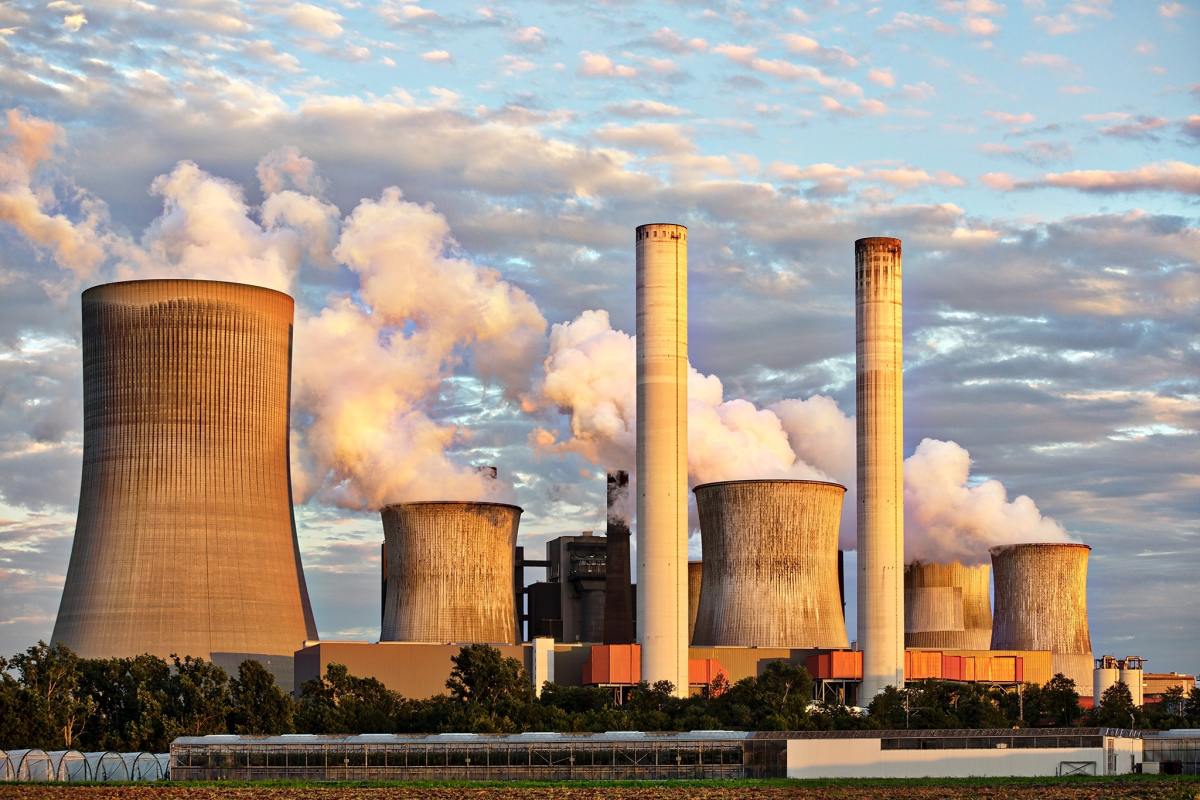China's Water Pollution Crisis is Out of Control
There was a time--decades ago--when farmers peaceful harvested their crops in the upper regions of China. For centuries, they used fresh water and soil to provide food and supplies for over one billion citizens. While air in this region is still relatively cleaner, water fresher and grasslands greener than the rest of the country, these farmers appear to be reaping on borrowed time.
Travel only a few hundred miles south and the environment quickly changes. One of China's major rivers, the Yellow River, is extremely polluted. At one point in the 1990s, it failed to run to the ocean for over 200 days (Turner, 2006, para. 7). Most rivers in China face similar pollution problems and this is a hard reality for billions of people and thousands of enterprises that rely on these water sources for drinking, enjoyment, travel and production.
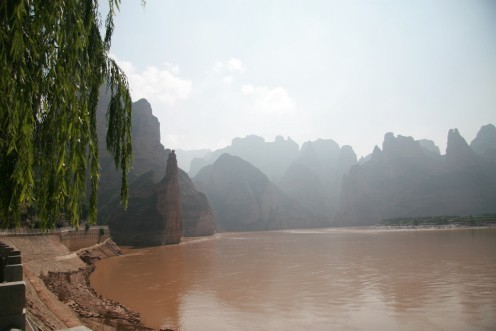
Why is China Polluted?
We can contribute China's widespread pollution to a number of factors. Factories and corporations continue to dump sewage into nearby rivers. Hundreds of dams, which both control major waterways and distribute water to arid regions, actually increase pollution in newly formed reservoirs and river embankments. Many times they drain water from key areas down stream and flood other areas upstream. Finally, polluters continue to dump sewage into the water because the government fails to smack them with harsh enough penalties. They have also failed to change the general attitude about pollution's long-term negative effects on the environment and people.
This article will discuss some of the history behind China's water pollution and its effects on both the country's environment and economy.
Xingyi Tenthousand Hills, China
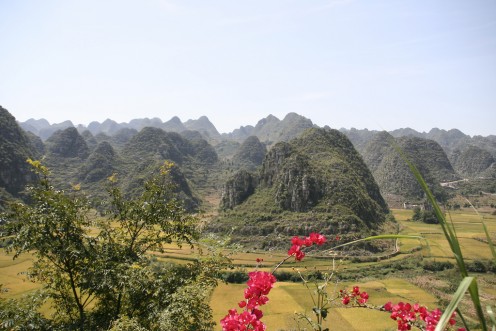
A Brief History on China's Water Pollution
For decades, China has teetered on a balance beam of total environmental collapse. Currently, rivers run polluted with toxins and smog settles sullenly above cities. Because of years of focused, but misguided economic growth, much of China's land lay rotting in a cesspool.
While it may be hard to believe, China was once a healthier economic power. Hundreds of years ago the country cradled a healthy environment in one hand and wielded a mighty economic fist in the other. If they could have witnessed it, the world would have envied China's remarkable evolution in the 15th century. The country was more of a superpower than European nations, which wrestled with the Church over the very idea of science and technological development.
In time, the nations reversed roles. Europe and younger nations like the United States rapidly developed and passed China as economic powerhouses.
China had fallen behind.
China's Predicted GDP Growth 2010-2050
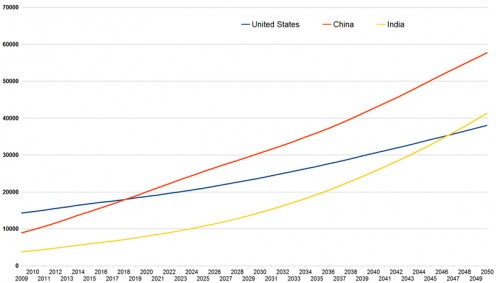
In the 1950s, China's leader Mao Zedong attempted to catch up with the modern world by building the country's first major dams and factories along the Yellow River. Soon after its completion, engineers constructed hundreds of other structures along similar waterways. Zedong was accomplishing his goal. He was controlling nature. His plan was working, but it would have drastic consequences on the overall health of the country's environment and citizens for years to come.
Both during and after Zedong's reign, few nations matched China's unprecedented economic advancement (Eslake, 2006, p.4). In the 1970s, China pushed through a number of economic reforms that helped the country's economy match most of its rivals, including one of its major competitors, India.
While it took more than 40 years for China to pass India's per capita GDP, "by 2002 China's per capita GDP was more than double India's (Eslake, 2006, p.4). By 2015, Eslake predicts China will have just passed the United States in per capita GDP, while India will have moved into third place worldwide (p.3).
According to New York Times contributors Damien Ma and William Adams (2013), "If the past 35 years of a resource-intensive economic boom have demonstrated anything, it is that the Chinese government is capable of producing growth, revving it up when necessary and reining it in when domestic priorities demand" (para. 15).
While it's great China can control its growth, both China and the world now deal with the pollution caused by the failure to control the waste produced by this growth.
The Construction of the Three Gorges Dam
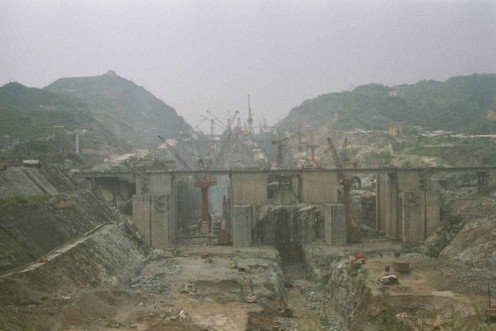
Causes of China's Water Pollution
Factories and dams are two major factors that contribute to China's water dilemma. First consider how countless factories dump sewage into fresh water rivers, which render them unusable and undrinkable. Now, consider how dams stop precious nutrients from flowing down stream to replenish disintegrating riverbanks. Finally, consider how China supports nearly 20 percent of the world's population on about 7 percent of the world's fresh water (Larmer, 2008, p. 5). Now you understand why, as of 2009, 400 of the country's 660 cities face serious water shortages and problems (Lamer, 2008, p.6).
Water problems continue to persist today. In March 2013, more than 2,000 dead pigs floated down the Shanghai River (Spector, 2013). While reports indicated the river was not polluted at the time of discovery, workers rushed to remove the carcasses in fear it would become polluted. The river is a major water source for Shanghai. Officials also didn't know who the culprits were or if the pigs died on their own; however, they speculate farmers upstream caused their deaths (Spector, 2013).
Three Gorges Dam Complete
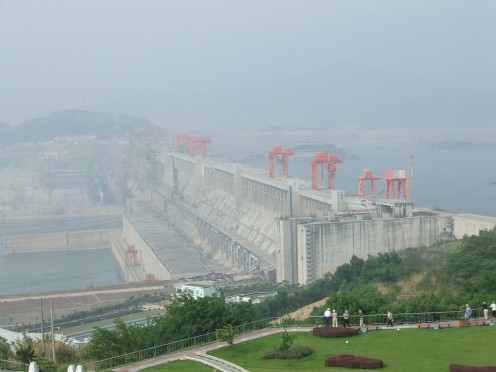
Water polluting the Yangtzee River
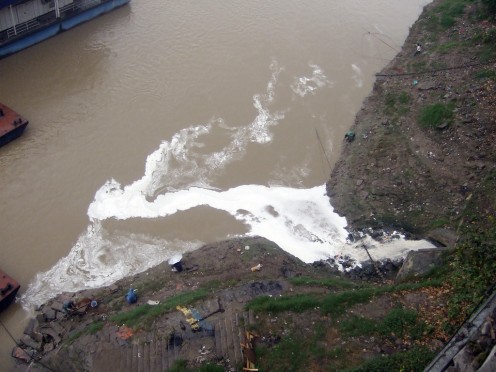
Yangtzee River
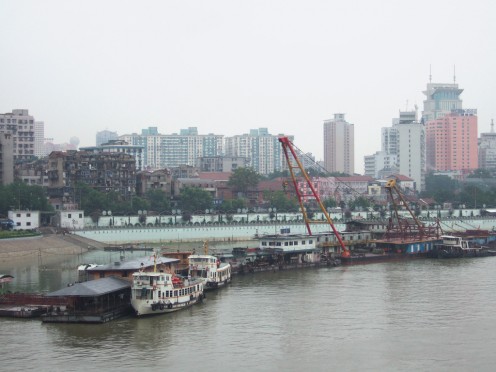
How have factories choked China's waterways?
According to China's State Environmental Protection Administration's (SEPA) 2006 survey, over half of China's twenty-one thousand chemical plants operate alongside the Yellow and Yangtzee Rivers (Turner, 2006, para 4). According to Peter Navarro (2008), "Every single year, China builds enough new coal plants to light up the entire British Isles" (para. 2).
Some of China's worse decline in water quality came between 1985 and 1995 due to an increase in unregulated townships and village enterprises (Environmental Health Perspectives, 2002, para. 2). These locally operated industrial towns, built to further spark China's economy in the late 1970s, have always done little to clean up waste spewing from their factories.
Cracking down on mischief (opinion): Chinese officials may choose not to punish enterprises for dumping because the former fear increasing unemployment rates when the latter have to cut jobs to pay for the fine.
On the other hand, if they do fine enterprises, these enterprises may just pay the fine instead of finding ways to reduce their pollution. In the short term, they may believe it is more economically feasible to pay up. This short term approach also saves the enterprises from devoting resources away from their main services or products. The enterprises likely believe it benefits them more, in the long term, to just pay the fine.
It is an uphill battle and simple fines slapped against billion dollar companies will never be enough to provoke change.
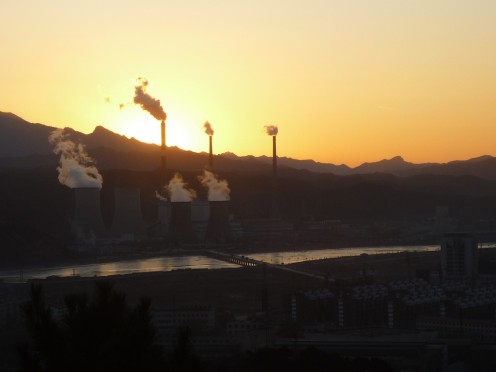
Sanmenxia Dam
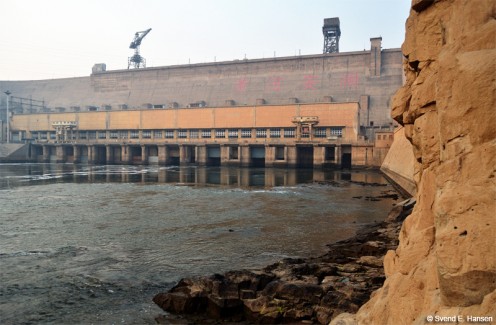
How a Growing Number of Dams Have Clogged China's Rivers
China might build a dam for a few reasons. They might want to generate electricity and supply water for agriculture, industries and households. They might also want to control flooding or settle rapids, which helps boats navigate rivers more easily. These are all great reasons to build a dam. But a dam can also cause its surrounding environment to change in drastic ways.
Dams halt the flow of thriving rivers and create man-made reservoirs, which harm the ecosystem of both bodies of water. According to the article, "Environmental Impacts of Dams" (n.d., para. 4-7), dams can affect bodies of water in the following negative ways:
- They hold back nutrients and sediment, which replenish rivers downstream.
- The reservoirs that form above dams contribute to green houses gases;
- And with many of China's rivers, dams prevent would be strong currents of water from washing away toxins, which rest along riverbeds and in reservoirs.
China now holds about half of the world's fifty thousand major dams (Larmer, 2008, p.7).Twenty are already on the Yellow River, while eighteen more will accompany the already existing dams by the year 2030 (Larmer, 2008, p.7).
Sanmenxia Dam Kills China's Rivers: To stem massive flooding during the late 1950s, China's leader Mao Zedong constructed a three hundred and fifty foot dam called the Sanmenxia Dam on the Yellow River (Larmer, 2008, p 7). While this appeared like a sound solution to a growing flood problem, the real issue with the dam reared its ugly head years later. The dam now contributes to massive water loss in the Yellow River, one of China's major and most renowned rivers.
Because engineers and scientists failed to account for (or chose to ignore) how dams cause a considerable amount of silt build up in rivers, the Sanmenxia Dam actually triggered these rivers to flood into surrounding farmlands (Larmer, 2008, p 7). And with the flood, flowed pollution. As a result, Zedong ordered more, minor dams be built to correct the problem.
And the vicious cycle continued.
Sanmenxia Dam
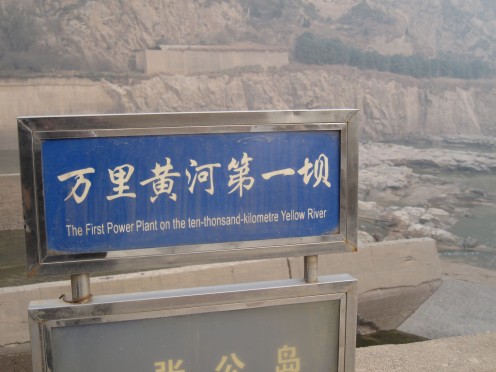
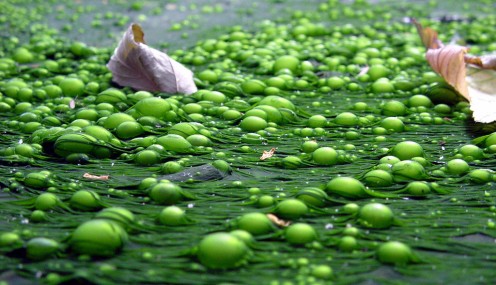
Water Pollution's Impact on China's Environment
Pictures show the color of the Yellow River blood red, magenta and white at times because of the high amount of toxins present. Toxins may increase the temperature of water, which can kill aquatic life, as well as drive others species from their natural habitats.
About 50 percent of the Yellow river is biologically dead (Larmer, 2008, para. 9). As chemicals leach into surrounding water, they can also destroy plants species and force others to grow at unimaginable rates. The oxygen levels of waterways can drop so low that it causes biological reactions to take place at much faster rates, animals' respiration and metabolism to fail and water purification process to, well, stop purifying.
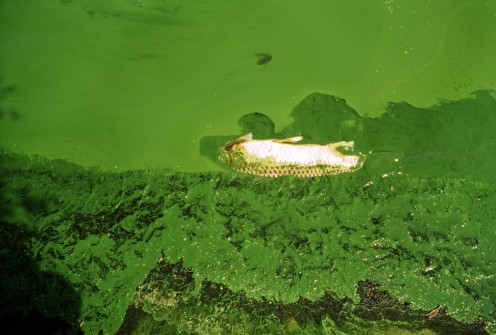
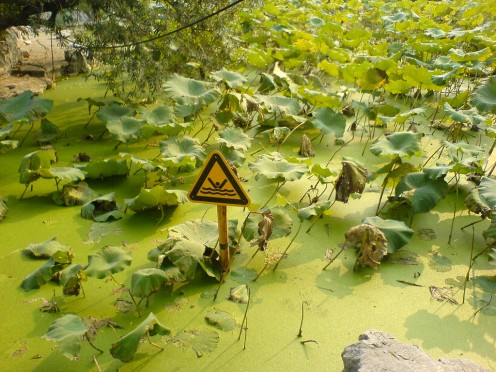
How Pollution Negatively Affects China's Economy
China's transition from a command, centralized economy to a market economy had an astounding, positive effect on the country's growth. With this transition and various reforms in the late 1970s, Township Village Enterprises (TVEs) and other parts of the private sector began to contribute more to China's development than state-owned enterprises. TVEs are various enterprises located outside urban areas.
With the increase in TVEs and economic growth during the late 1970s and 1980s, waste water increased by almost 27.8 percent (Wu, et al., 1999, p. 251).
TVE's on economy: While TVEs accounted for about 7 percent of China's Gross Domestic Product in 1978, by 1995 they accounted for 58 percent of the total industrial GDP (Wu, et al., 1999, p. 251). Schmidt (2002) reported that Robert Taylor, the lead energy economist with the East Asia Energy and Mining Unit of the World Bank suggested that, "Factory managers often view environmental technology as a low priority...And domestic banks are wary of environmental projects because they create high transaction costs and generate short-term returns" (para. 13).
How concerned are you with China's pollution problem?
While Schmidt (2002) suggests market pressures, in time, will force China to change its damning environmental practices, the nightmare persists in most corners of the country.
While Schmidt (2002) suggests market pressures, in time, will force China to change its damning environmental practices, the nightmare persists in most corners of the country. Schmidt quotes Vaclav Smil, a professor of environmental studies at the University of Manitoba, who stated, "In some places you can walk down the street [in China] and every five hundred meters you see another shed full of young girls making electronics, bikes, everything for the western markets. All that...waste...just goes into local rivers. No one spends money to control pollution. That's why you get such a good price" (para. 14).
Schmidt (2002) believes this pollution actually holds China's economy back. To support his claim, he cites the 1997 World Bank report, "Clear Water, Blue skies: China's Environment in the New Century," which states, "the damages caused by pollution and degraded resources consume up to 8 percent of China's GDP, roughly equal to the annual growth of the country's economy" (para 5). In 2009, Brook Lamer reported that the world bank estimates China loses about 5.8 percent of its annual GDP each year because of environmental mishaps and damage (p. 4).
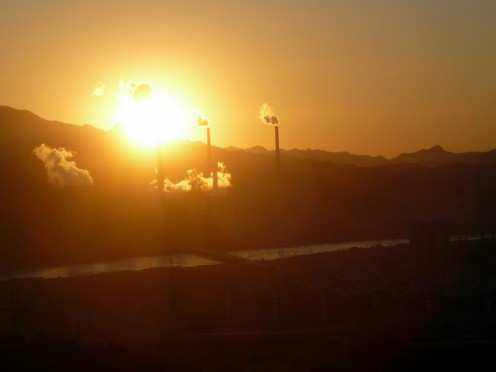
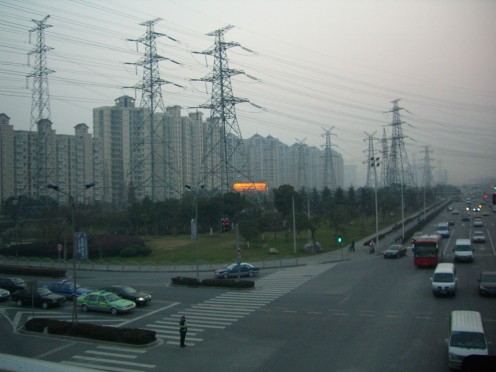
Air pollution on economy: Enterprise owners and state officials appear to ignore the impact air pollution has on their country's economy. A few years ago, Beijing distributed a report that predicted a 30 percent drop in perception in three of China's seven major rivers regions around Huai, Liao and Hai and a 37 percent decrease in wheat, rice and corn yields in the second half of the century (Economy, 2007, p.3).
Crops need rain to survive and with a shortage of crops, China's agriculture sector will falter. The result will leave one of its largest revenue providers literally and figuratively gasping for water.
Deforestation on economy: We must also consider how deforestation punches the country's economy in the gut. As China continues to build, it strips the landscape of vital forests.
This action initiates erosion and flooding, which pollutes land and creates expensive clean ups. Much of the money to support the latter could be used to support its people. Deforestation further expands deserts, which creates hazardous sand storms. These storms invade and pollute cities and shut down local economies for days at at time.
Final Thoughts
While this article is pretty one-sided, I hoped to provide some insight into the hell China's citizens wake up too. I did not discuss how parts of the country are actually beautiful, or how China is rich in history; however, for now, I feel doing so might detract from the more important topic at hand.
Parts of China are well preserved, while others need help. The more we discuss their pollution issue, the better chance its rivers will flow clean again and its sun rise into clear skies.
China's Toxic Atmosphere Has Spawned Some New Businesses, but at Whose Expense?
Citations
Cohen, C. (2008, 07 03). China's blooming algae problem that's swamping the olympics read more: http://www.dailymail.co.uk/news/article-1031444/chinas-blooming-algae-problem-thats-swamping-olympics.html
Economy, E. C. (2007, 10). The great leap backward?. Retrieved from http://www.socio.ethz.ch/education/fs12/envirsoc/Elizabeth_Economy_2007_Foreign_Affairs.pdf
Economy, E. C. (2007, 02 24). The great leap backward. Retrieved from http://www.nytimes.com/2007/08/24/opinion/24iht-edeconomy.1.7244519.html
Environmental Health Perspectives. (2002, 09). Reviving china's ruined rivers. Retrieved from http://www.ncbi.nlm.nih.gov/pmc/articles/PMC1241003/pdf/ehp0110-a00510.pdf
Environmental Impacts of Dams. (n.d.).http://www.internationalrivers.org/environmental-impacts-of-dams. Retrieved from http://www.internationalrivers.org/environmental-impacts-of-dams
Eslake, S. (2006). China and india in the world economy and the implications for australia. Retrieved from http://www.aba.org.tw/images/upload/files/SaulEslake.pdf
Larmer, B. (2008, 05). Bitter waters: Can china save the yellow—its mother river?. Retrieved from http://ngm.nationalgeographic.com/2008/05/china/yellow-river/larmer-text?rptregcta=reg_free_np&rptregcampaign=20131016_rw_membership_r1p_us_dr_w
Lendon, B. (2011, 07 25). Thick, green algae covers 200 square miles of yellow sea. Retrieved from http://news.blogs.cnn.com/2011/07/25/thick-green-algae-covers-200-square-miles-of-yellow-sea/
One dam mistake after another leaves $4.4bn bill. (2004, 05 22). Retrieved from http://www.smh.com.au/articles/2004/05/21/1085120121829.html
Schmidt, C. W. (2002, 09 01). Economy and environment: China seeks a balance. (focus).. Retrieved from http://www.thefreelibrary.com/Economy and environment: China seeks a balance. (Focus).-a094261087
Spector, D. (2013, 03 12). The number of dead pigs found in shanghai river doubles in fewer than 24 hours read more: http://www.businessinsider.com/dead-pigs-found-floating-in-chinese-river-2013-3
Threat of Pollution in the Yangtze. (n.d.). Retrieved from http://wwf.panda.org/about_our_earth/about_freshwater/freshwater_problems/river_decline/10_rivers_risk/yangtze/yangtze_threats/
Turner, J. L. (2006, 12 24). China's water problems. Retrieved from http://www.ocnus.net/cgi-bin/exec/view.cgi?archive=106&num=27251
Waterworks. (2000, 06). Retrieved from http://www.canadiangeographic.ca/magazine/mj00/feature_water2.asp
Wines, M. (2011, 05 11). China admits problems with three gorges dam. Retrieved from http://www.nytimes.com/2011/05/20/world/asia/20gorges.html?_r=0
Wu, C., Maurer, C., Wang, Y., Xue, S., & Davis, D. L. (1999, 04). Water pollution and human health in china. Retrieved from http://faculty.washington.edu/stevehar/chinenv-wuch.pdf
© 2014 Frank Sturm





